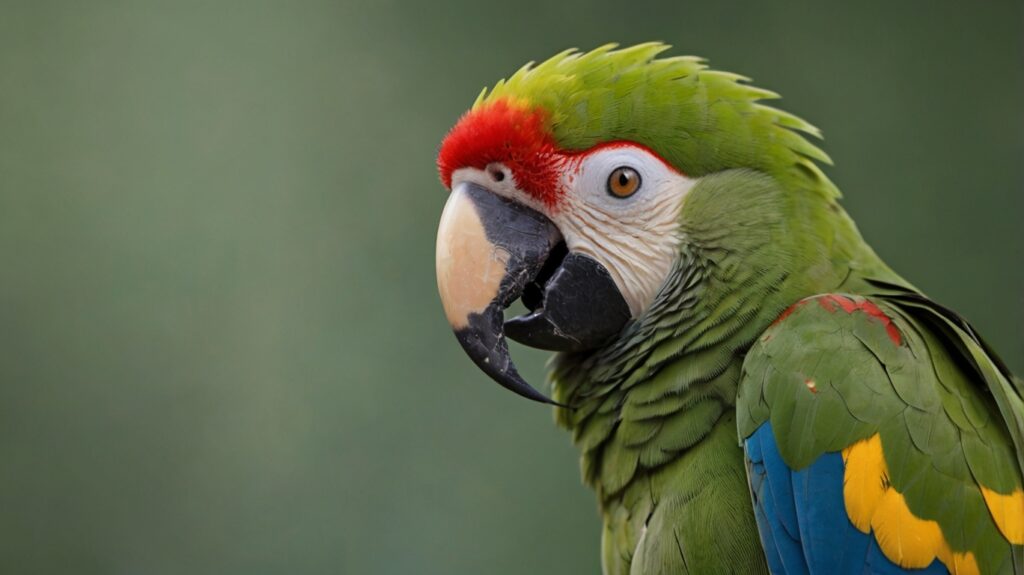Table of Contents
- Introduction
- Appearance and Characteristics
- Temperament and Behavior
- Diet and Nutrition
- Habitat and Care Requirements
- Health and Lifespan
- Breeding and Hybridization
- Conclusion
- FAQs
Introduction
The Harlequin Macaw is a stunning hybrid parrot, a cross between a Blue and Gold Macaw and a Green-winged Macaw. Known for its vibrant plumage and friendly demeanor, this bird is a favorite among avian enthusiasts. In this guide, we’ll explore its appearance, temperament, care needs, and more to help you understand what makes this hybrid macaw so special.

Appearance and Characteristics
The Harlequin Macaw inherits traits from both parent species, resulting in a visually striking bird. Key features include:
- Colorful Plumage: A mix of blues, greens, yellows, and reds.
- Size: Typically 30-35 inches in length, weighing 2-3.5 pounds.
- Beak & Eyes: Strong black beak and expressive light-colored eyes.
This hybrid’s exact coloration varies, but it often displays a brilliant blend of its parents’ hues.
Temperament and Behavior
Harlequin Macaws are known for their:
- Playful and Social Nature – They thrive on interaction and mental stimulation.
- Intelligence – Highly trainable, capable of learning tricks and mimicking speech.
- Affectionate Personality – Bonds strongly with owners but may become territorial if neglected.
Early socialization is key to preventing behavioral issues like excessive screaming or aggression.
Diet and Nutrition
A balanced diet is crucial for a Harlequin Macaw’s health. Their meals should include:
- Fresh Fruits & Vegetables (apples, carrots, leafy greens)
- High-Quality Pellets (formulated for large parrots)
- Nuts & Seeds (in moderation due to high fat content)
- Protein Sources (cooked eggs, lean meats occasionally)
Avoid avocado, chocolate, and caffeine, as these are toxic to parrots.
Habitat and Care Requirements
To keep a Harlequin Macaw happy, provide:
- Spacious Cage (minimum 3x4x5 feet) with perches and toys.
- Mental Stimulation – Puzzle toys, foraging activities, and training sessions.
- Regular Exercise – Supervised out-of-cage time for flying and exploration.
Maintain a clean environment to prevent respiratory and feather issues.
Health and Lifespan
With proper care, Harlequin Macaws can live 30-50 years. Common health concerns include:
- Feather Plucking (due to stress or boredom)
- Psittacine Beak and Feather Disease (PBFD)
- Respiratory Infections
Regular vet check-ups and a nutritious diet help prevent these issues.
Breeding and Hybridization
Harlequin Macaws are bred in captivity, as hybrids do not occur naturally. Breeders pair:
- Male Blue and Gold Macaw × Female Green-winged Macaw (or vice versa).
Hybrid vigor can result in robust offspring, but ethical breeding practices are essential to avoid genetic complications.
Conclusion
The Harlequin Macaw is a captivating hybrid parrot, combining beauty, intelligence, and a loving personality. While they require dedicated care, their companionship is rewarding for experienced bird owners. By meeting their dietary, social, and environmental needs, you can ensure a long, healthy life for your feathered friend.
FAQs
1. Are Harlequin Macaws good pets?
Yes, they are affectionate and intelligent but require experienced owners due to their social and care needs.
2. How much does a Harlequin Macaw cost?
Prices range from $1,500 to $3,500, depending on breeder reputation and lineage.
3. Can Harlequin Macaws talk?
Yes, they can mimic speech and learn words with consistent training.
4. What’s the difference between a Harlequin and a Catalina Macaw?
A Catalina is a cross between a Blue and Gold Macaw and a Scarlet Macaw, while a Harlequin involves a Green-winged Macaw parent.
5. Do Harlequin Macaws get along with other pets?
They can coexist with other pets if properly socialized but should always be supervised.
